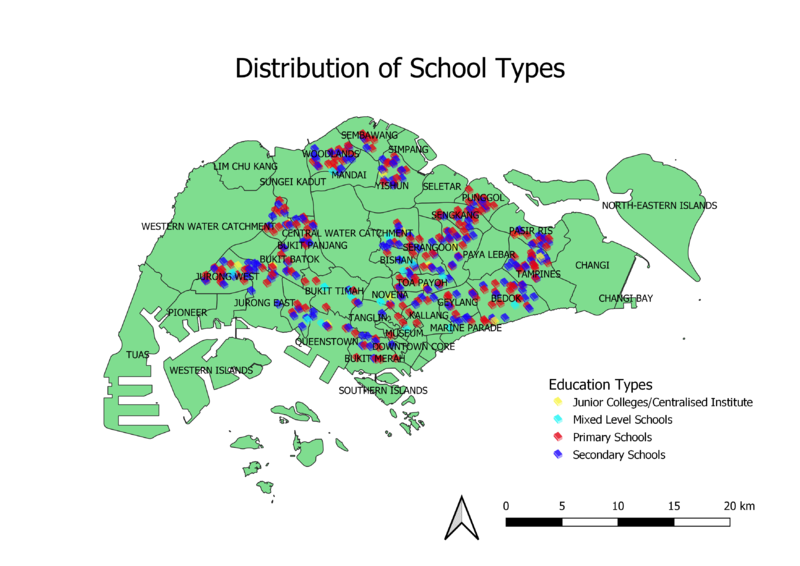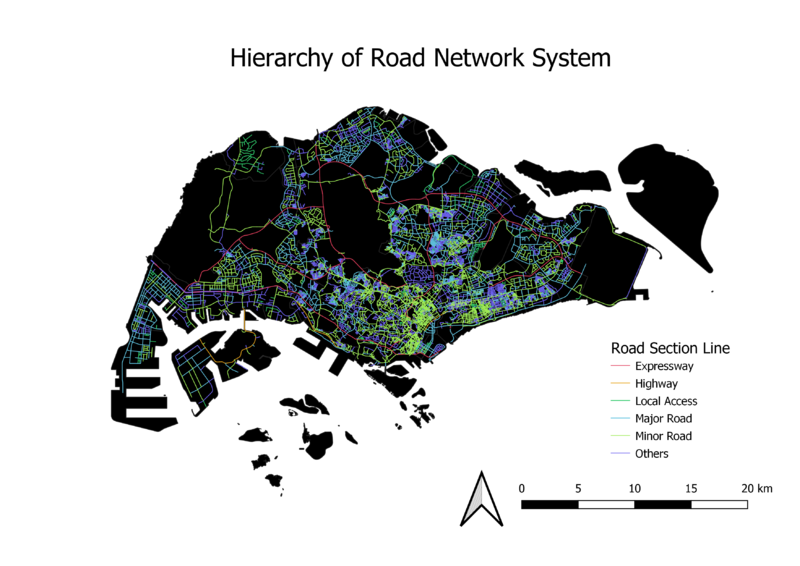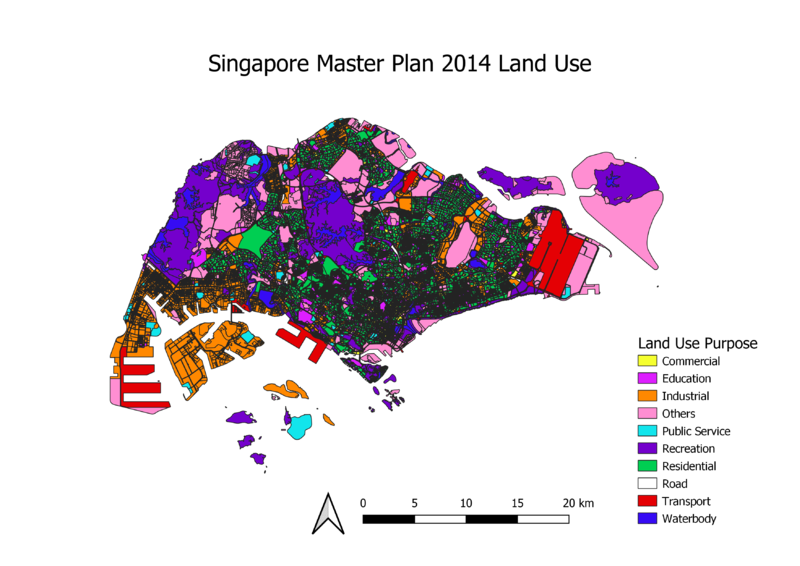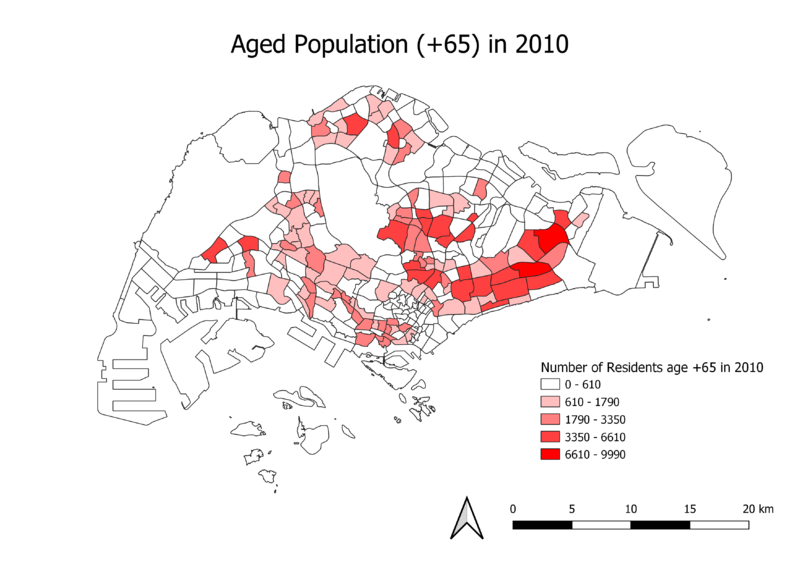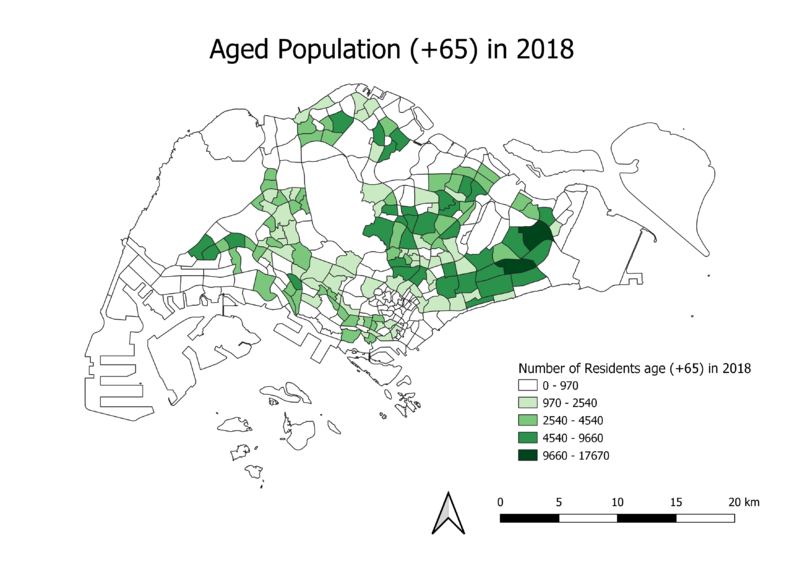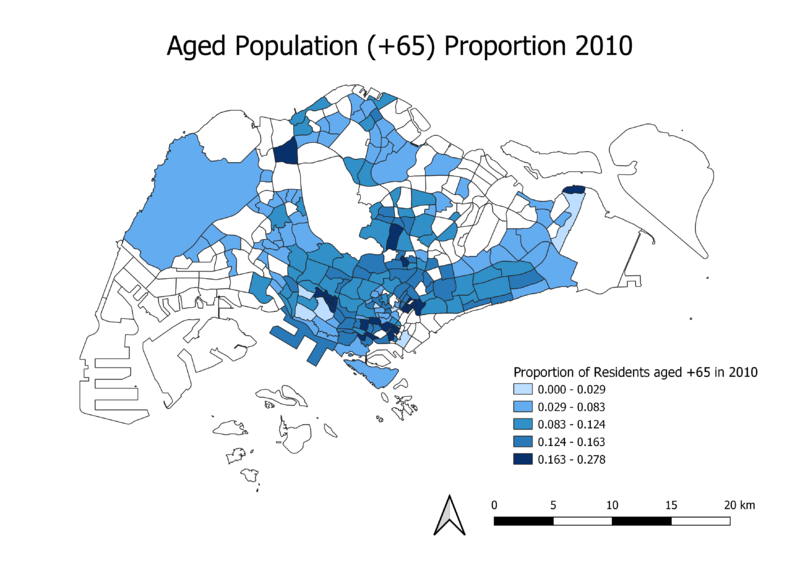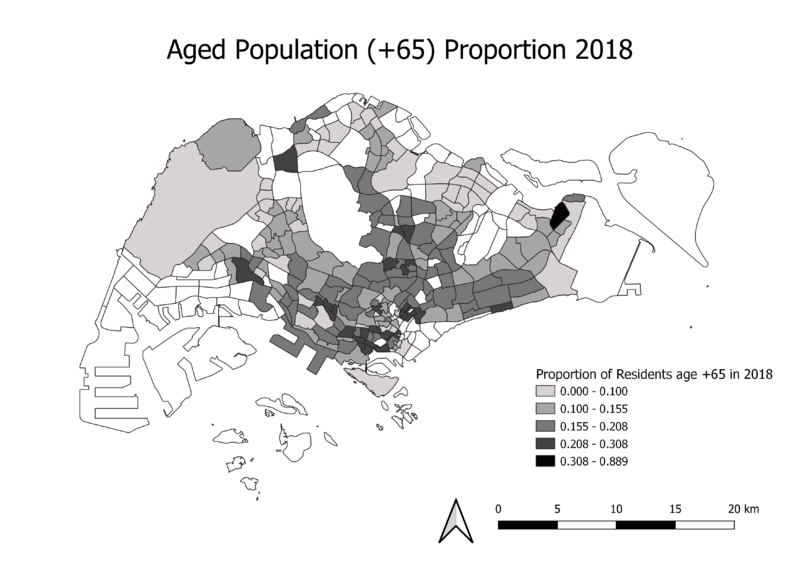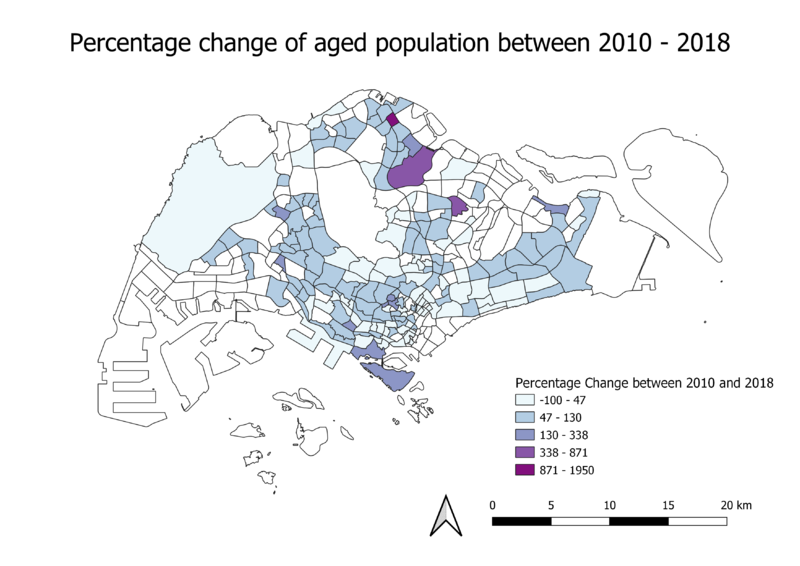SMT201 AY2019-20G2 Ex1 Ng Qi Hui
Contents
- 1 Distribution of School Types
- 2 Hierarchy of Road Network System
- 3 Singapore Master Plan 2014 Land Use
- 4 Part 2
- 5 Aged population in 2010
- 6 Aged population in 2018
- 7 Proportion of aged population in 2010
- 8 Proportion of aged population in 2018
- 9 Percentage change of aged population between 2010 - 2018
- 10 New Variables Derivation
- 11 Missing Values
Distribution of School Types
source: data.gov.sg
The school types are qualitative data with nominal scales, so I categorized the data in POI_CHAR from the attribute table. I made use of the SVG symbols to symbolize schools. Following that, by assigning a different color to every school type, I could show the distribution of the type of schools throughout Singapore. For better identification purposes, I added the planning area of Singapore and included their labels so that the user can know at a glance where are the different types of schools located at.
Hierarchy of Road Network System
source: data.gov.sg
Since the types of roads in the network system is a form of qualitative data with nominal scales, I chose to categorize the roads. There were too many roads from the network system data initially which resulted in a very messy road network . Hence, I decided to categorize the roads into 6 big categories: Expressways, Highways, Local Access (walk, lane, link), Major Roads (boulevard, avenue, drive), Minor Roads (road, street), and Others. I created a new column RD_CLASS and filtered out the different roads into their various types. Then I opened field calculator to input the corresponding category type to the roads. Each category was assigned a different color for clearer illustration of the composition of the road network system.
Singapore Master Plan 2014 Land Use
source: data.gov.sg
The land use features are qualitative data, so I used the data in LU_Desc from the attribute table to categorize the various land uses. Since there were too many separate land uses throughout Singapore which resulted in a very complicated map, I decided to merge some land uses which are common together into a larger group category. For instance, I grouped business 1 and business 2 together as ‘Industrial’. A different color was assigned to every land use category so that the user can identify how much of Singapore’s land is being used for that particular purpose.
Part 2
Aged population in 2010
source: data.gov.sg, singstat
The chloropleth map shows that there is a large number of subzones that have a low number of residents aged 65 and above, as shown by the large number of white spaces as compared to those that are bright red. The areas which has more aged people tend to lie more in the east region of Singapore. I used Natural Breaks to classify the groups as in makes use of the real numbers within the data set, thereby giving a more detailed and accurate representation of the data.
Aged population in 2018
source: data.gov.sg, singstat
Comparing this chloropleth map to the one in 2010, there is an increase in the number of people age 65 and above living in Singapore. This can be seen from the classes of the Number of Residents age (+65) in 2018, whereby the values for each classification has increased by quite a bit as compared to the values in 2010. This shows that Singapore is progressively being populated by an aging population. This data is useful for urban planners who will know where should they build more facilities for the elderly.
Proportion of aged population in 2010
source: data.gov.sg, singstat
For the proportion of aged population in 2010, I chose to define it as the number of residents age 65 and above living in that particular subzone over the total number of residents living in that same subzone. In comparison to the map ‘Aged Population (+65) in 2010’, there is an increase in the number of shaded areas in the west. This shows that there is a low number of residents younger than 65 years old living in that area, thereby making the proportion of elderly residents high in those subzones. On the contrary, there is an increase in the number of lighter shaded area in the east, which implies that there is a high number of residents younger than 65 years old living in those areas, thereby making the proportion of elderly residents low in those subzones.
Proportion of aged population in 2018
source: data.gov.sg, singstat
For the proportion of aged population in 2018, I also chose to define it as the number of residents age 65 and above living in that particular subzone over the total number of residents living in that same subzone. In comparison to the map ‘Aged Population (+65) in 2018’, there is an even larger increase in the total number of shaded areas, especially in the west. The map looks similar to that in 2010, but since the values for each class has increased, this shows that there is a higher proportion of aged people living in the subzones, thereby indicating an aging population.
Percentage change of aged population between 2010 - 2018
source: data.gov.sg, singstat
This map exemplifies the increasing aging population phenomenon in Singapore. The darker tones shows the greatest percentage change between the years 2010 to 2018. Majority of the areas has a medium blue tone, which still shows that there was an increase in the number of aging people living in each subzone. Through plotting this map out, we can clearly tell that approximately half of Singapore’s area has had an increase in the number of people aged 65 and above living in there, showing that aging population is definitely a pressing problem which we must tackle.
New Variables Derivation
I derived the values of those aged 65 and above by using the field calculator function in QGis. After creating a new field in the attribute table, i proceeded to sum up those columns which contained people who are aged 65 and above. This new field, which i named Age65+, is then used in all my choropleth mappings.
For the choropleth maps for the proportion of aged population in 2010 and 2018, i derived the proportion values by taking the number of Age 65+ people living in that subzone / total number of people living in that same subzone.
For the last choropleth map, which was the percentage change of aged population between 2010 and 2018, I derived the percentage change values by ((Age65+ from 2018 - Age65+ from 2010)/(Age65+ from 2010)) * 100. I did this through the use of the field calculator again, by going through the motions of creating a new field which i named as P.change, then adding in the corresponding equation and applying it.
Missing Values
To tackle the missing values found in the data set, i changed all those which had a value of '-' to be 0. Even though this might make the data set inaccurate, it would be better to assume a zero value as compared to predicting our own values which might make the data set even more inaccurate.
